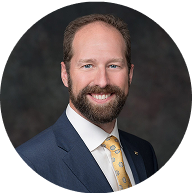I am eligible to retire from fed service at 57 1/2. I will have 36 years of service. I plan on using my TSP to supplement my retirement. I cant seem to find a straight answer on withdrawing my money prior to 59 1/2 without paying the 10% penalty. Some sites say I can access all of it anytime, others say I have to use the SEPP plan, and others say I can access all of it but only 4 times per year. I understand the tax paid on it is variable to my overall income. – Tim
Federal employees have special options for taking money from their Thrift Savings Plan (TSP) before age 59½ without paying extra taxes. This is important to know if you want to retire early.¹
The “Age 55 Rule” for Federal Employees
If you leave your federal job in the year you turn 55 or later, you can take money from your TSP without paying a 10% penalty. This is called the “Age 55 Rule.”¹ This rule only works for TSP accounts, not for other retirement plans like IRAs.
Important Things to Remember:
- If you move your TSP money to an IRA after retiring, you’ll have to wait until you’re 59½ to use that money without penalties.
- You’ll still pay regular taxes on the money you take out, but you can avoid the extra 10% penalty if you take the money directly from your TSP and you’re old enough.
Example: Retiring at Age 57
Let’s say you retire at age 57 after working for the government for 36 years. You can use your TSP money right away without penalties because you’re older than 55 when you retire. But if you move that money to an IRA, you’ll have to wait until you’re 59½ to use it without penalties.
Planning Your Withdrawals
- Keep enough money in your TSP to cover your needs until you turn 59½.
- Use your TSP for penalty-free withdrawals and think about moving the rest to an IRA later.
Special Things to Think About
If you retire in the middle of the year, make sure you understand how this affects your TSP withdrawals. For example, money you earn before you retire, like your last paycheck, doesn’t count as “retirement income” for penalty purposes.
References:

ABOUT THE AUTHOR
Micah Shilanski, CFP®, is a distinguished financial planner known for his deep commitment to providing exceptional advisory services to his clients. As the founder of Plan Your Federal Retirement, Micah has dedicated his career to helping federal employees understand and optimize their benefits to ensure a secure and prosperous retirement. His expertise is widely recognized in the industry, making him a sought-after speaker and educator on financial planning and retirement strategies.
Micah’s approach is client-centered, focusing on creating personalized strategies that address each individual’s unique needs. His work emphasizes the importance of comprehensive planning, incorporating aspects of tax strategy, investment management, and risk assessment to guide clients toward achieving their financial goals.Micah Shilanski 00:03
If you’re going to retire before age 59 and a half, you need a plan on how you’re going to access your investments without paying a 10% penalty. If you’ve ever wondered what the answer to that question is, then stay tuned for this FERS Federal Fact Check. Hi, I’m Micah Shilanski with Plan Your Federal Retirement and welcome to this FERS Federal Fact Check. I’m excited to chat about this question today, which is being able to retire a little bit sooner. Right? We often think about retirement, I know not so much in the federal employee space, but in this is more civilian space you think about retirement, 60 to 65, etc. But federal employees have a pretty unique ability to be able to retire earlier than a lot of people and it has to do with your great benefit plan that you have, but you’ve got to know how to use it. And that’s where this question from Tim is going to come in. He says I’m eligible retire from federal service at 57 and a half. I have 36 years of service. I’m planning on using my TSP to supplement my retirement. I cannot seem to find a straight answer on withdrawing money prior to 59 and a half without paying an additional 10% penalty. Some sites say I can access all the money anytime, other sites they have to set plan and still others say that I can access on only four times a year. I understand there’s taxes paid on the variable amount of my total income, but how do I take my money out? Tim, that is a great question. And this is where it can get a little complex, right. Every different type of benefit set out there has slightly different rules. So what we’re going to be talking about is just the federal employee rules to make sure we’re on the same page. First thing that you kind of mentioned that said you’ll be eligible retired from federal service at 57 and a half. I found that half kind of interesting. 57 is going to be at least your MRA rate might be sooner based on your age, but at least your MRA will be 57. And you only need 30 years of creditable service to be retire at 57. So it looks like you’re going to be retiring a little bit sooner, maybe at 57. Maybe you just wanna go out at 57 and a half, but it’s something that kind of stood out so I wanted to mention it. Let’s talk about the rules of distribution from your TSP account. The rules of the TSP are says that if you separate from service at 55 or older, you can access your TSP with no penalties. That’s a fantastic rule. So what does that mean? If you retire at 57, that’s 55 and older, from federal service, you can access your TSP with no penalties whatsoever. Let’s see how that is gonna look like, let’s put your TSP on this side. And let’s just say you have an IRA on this side. And this could be an IRA, this could be a 401 K, this could be like a state plan that’s there. This could be like a SEP plan. Other things that are out there. If your TSP is your employer plan and you’re working until age 57 and you separate, you can pull money out of here without a penalty. With no problem whatsoever. You still have to pay taxes. Unfortunately, as you already mentioned, the IRS is still part of it when you can pull money out. However, there’s a magical dividing line between this TSP account and your other investment accounts like an IRA. When is as soon as you can pull money out of an IRA without penalty without getting super fancy. And that’s going to be 59 and a half years young in order to pull it up. Yes, there’s this thing called 72 it gets super complex. I’m not going to get into it in this video, but it’s really 59 and a half. The TSP is going to be different because it’s your employer retirement account that you’re separating from. But what if you took that tsp and you transferred that money into an IRA account? If you transfer that money to an IRA account at 57 When can you access that money? 59 and a half, right? We got to be really careful of this. So I’m a big fan of using a TSP and IRAs together in that combination of thing, but this is the one that you really got to look at your income and say, Where am I going to be pulling my income from, and you want to make sure you’re leaving at least enough money in here to pull money out of your TSP account until you’re 59 and a half when your other IRAs and other investments become available. So Tim, that is a great question. If you need more information on that tsp.gov I know we have it on our website plan-your-federal-retirement.com but also tsp.gov has some great information about that age 55 rule. As always, I love these questions. Thank you so much for sending them in. Keep sending these questions coming. We love answering them and until next time, happy planning




